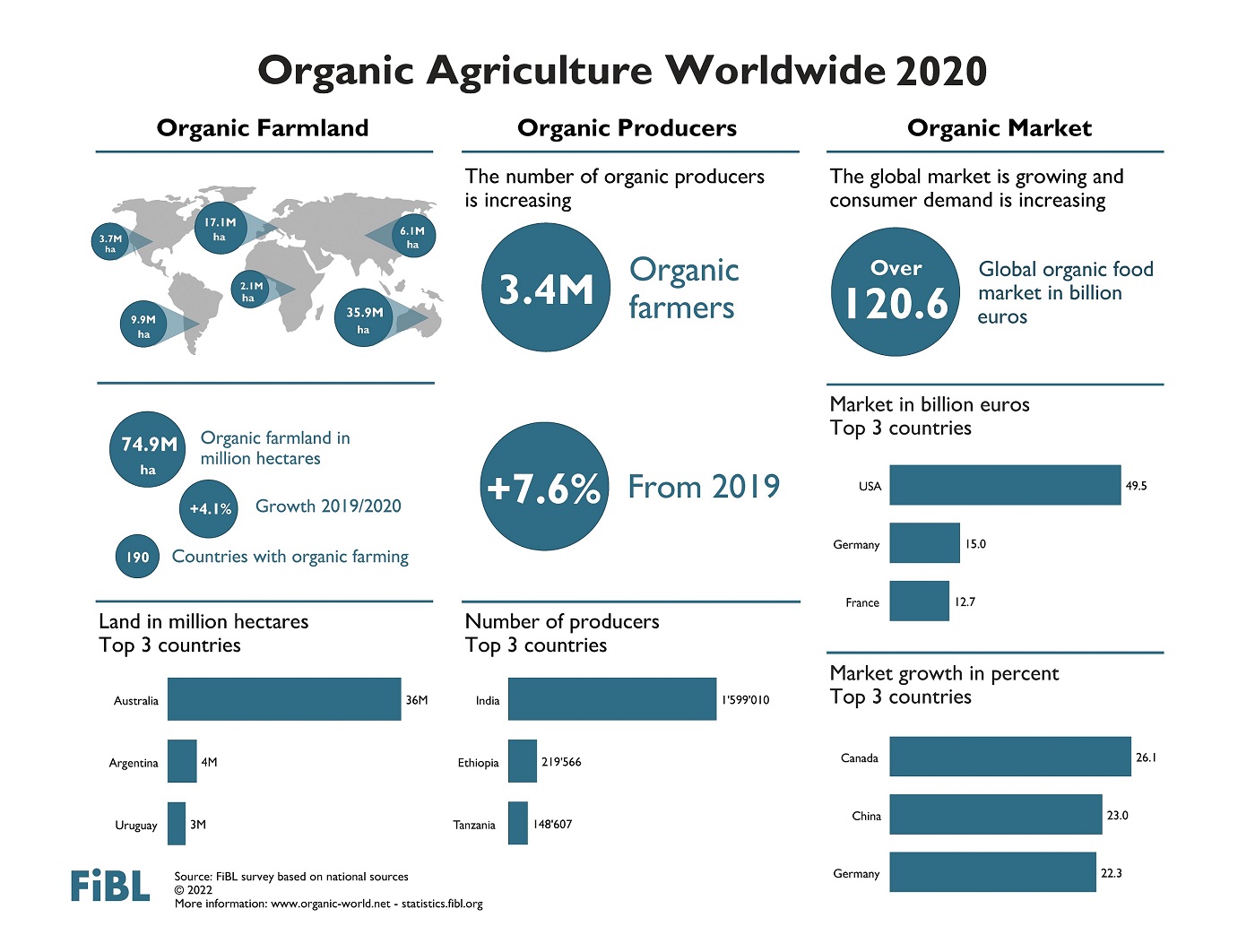Global organic market: Unprecedented growth in 2020—organic retail sales grew by $15 billion and exceeded the $132 billion mark

Published: March 29, 2022
Category: Organic News
Organic farmland and retail sales both continued to show strong growth worldwide, according to data from 190 countries (data as of the end of 2020). Published by FiBL and IFOAM – Organics International, the 23rd edition of “The World of Organic Agriculture” shows the positive trend seen in past years continued into 2020.
The global organic market continues to grow
Against the backdrop of the pandemic, the global market for organic food showed its highest growth ever in 2020, exceeding 120 billion euros ($132 billion)—a total increase of 14 billion euros. The United States continued to be the leading market (49.5 billion euros/$55 billion), followed by Germany (15 billion euros/$16.5 billion) and France (12.7 billion euros/$14 billion). In 2020, many major markets showed extraordinarily strong growth rates; the German market, for example, grew by more than 22%! Swiss consumers spent the most on organic food (418 euros/$459 per capita in 2020), and Denmark continued to have the highest organic market share, with 13% of its total food market. The global COVID-19 pandemic resulted in a significant increase in demand for organic products in many countries, but there were also challenges:
“The effects of the pandemic are visible in retail sales data. As people stayed home and began to cook more often and health, environment and climate change have become big issues, organic retail sales increased rapidly. However, at the same time, in the food service sales decreased in many countries,” says Helga Willer, who is in charge of the yearbook at FiBL.
3.4 million organic producers worldwide
In 2020, 3.4 million organic producers were reported, an increase of 7.6% compared to 2019. India continued to be the country with the most organic producers (1.6 million). The majority of small-scale producers are certified in groups based on an internal control system.
Steady increase of organic farmland
Almost 75 million hectares/185 million acres were organically managed at the end of 2020, representing a growth of 4.1% or 3 million hectares/7.4 million acres compared to 2019. Australia had the largest organic agricultural area (35.7 million hectares/88.21 million acres), followed by Argentina (4.5 million hectares/11.1 million acres) and Uruguay (2.7 million hectares/6.6 million acres). Organic area increased across all continents in 2020. Half of the global organic agricultural land is in Oceania (35.9 million hectares/88.7 million acres). Europe had the second largest area (17.1 million hectares/42.2 million acres), followed by Latin America (9.9 million hectares/24.4 million acres).
Ten percent or more of farmland is organic in 18 countries
In 2020, 1.6 percent of farmland around the world was organic. However, many countries have far higher shares: Liechtenstein had the largest organic share of total farmland (41.6%), followed by Austria (26.5%) and Estonia (22.4%). In 18 countries, 10% or more of all agricultural land is organic.
Source: Research Institute of Organic Agriculture (FiBL)
To view source article, visit:
https://www.fibl.org/en/shop-en/1344-organic-world-2022
Organic & Non-GMO Insights April 2022








